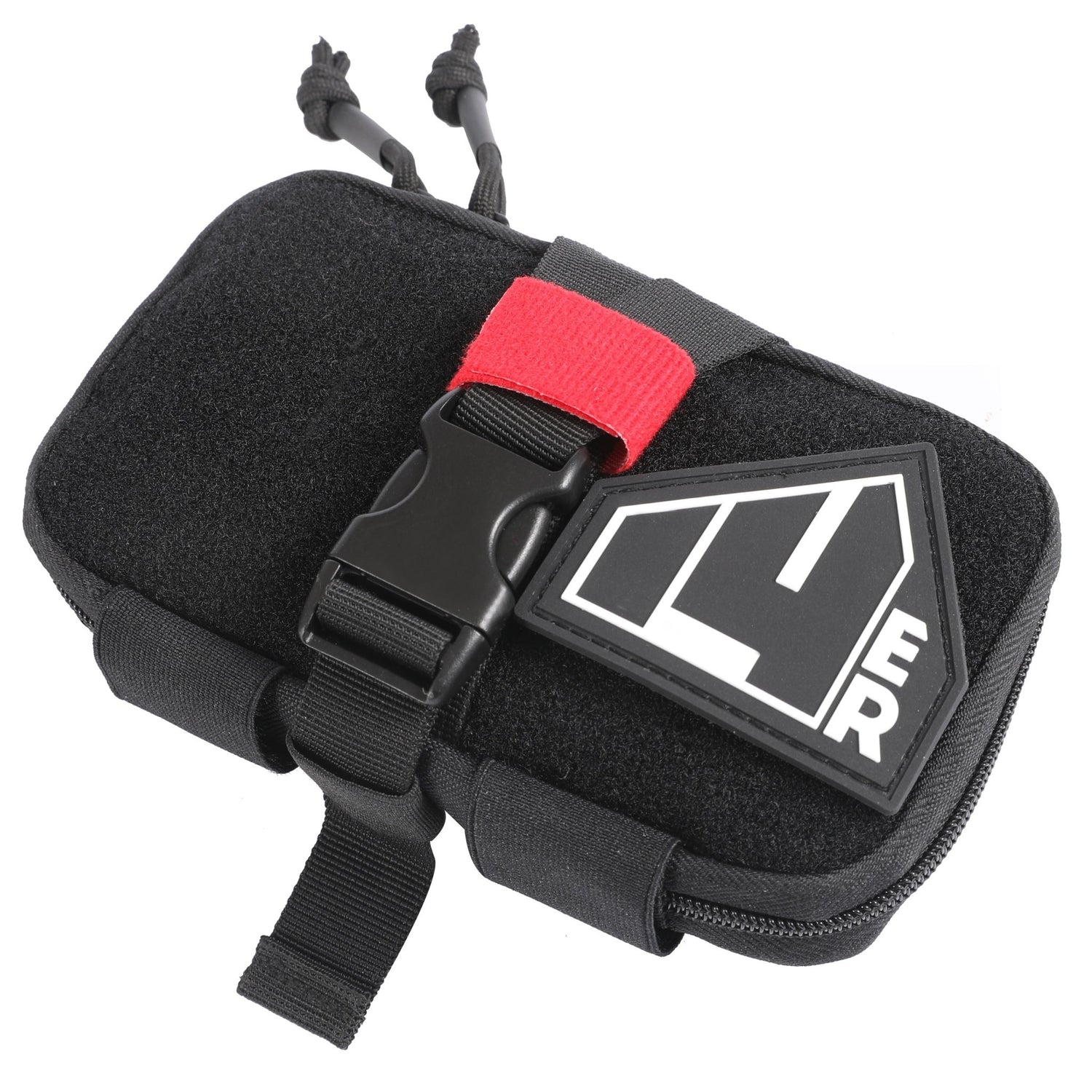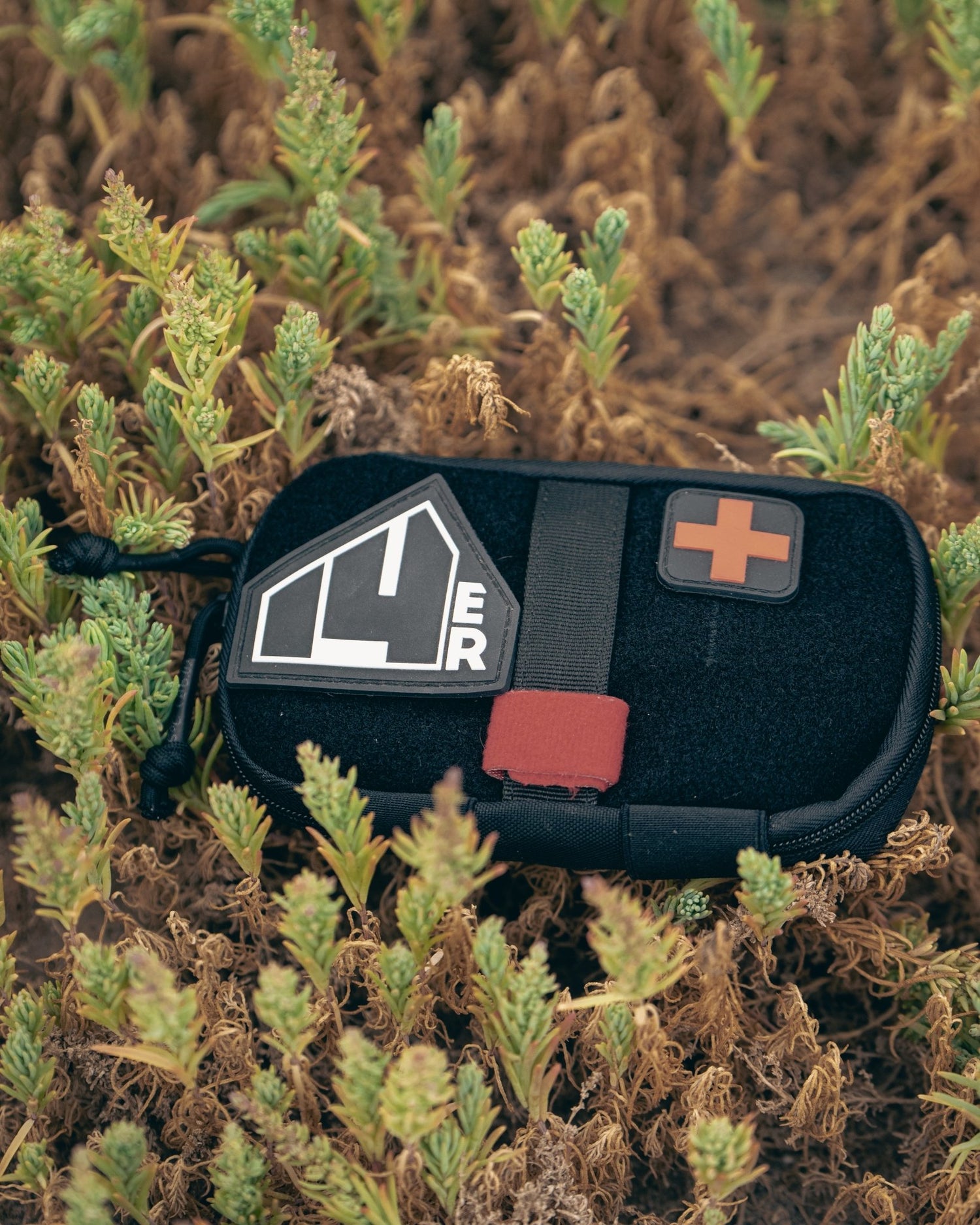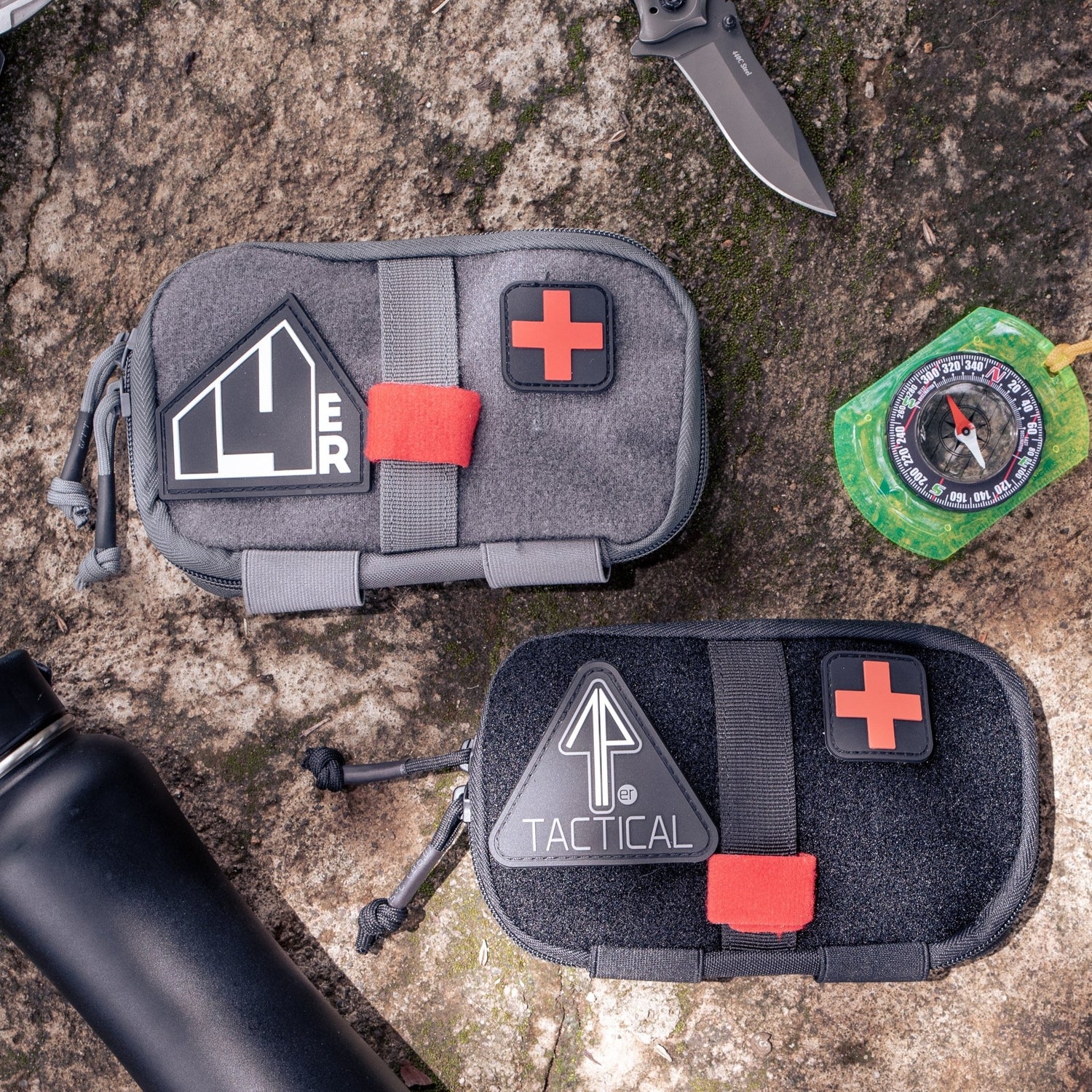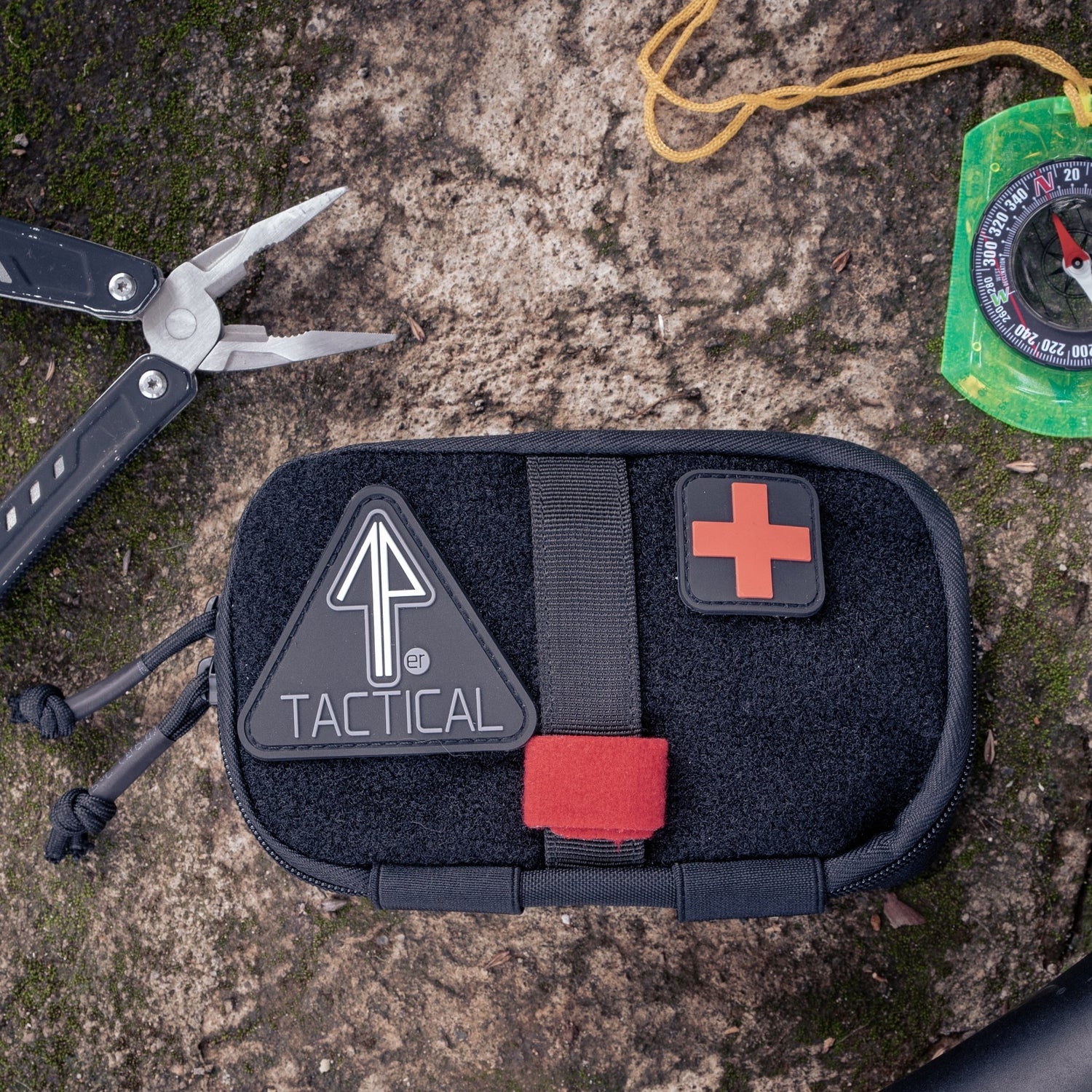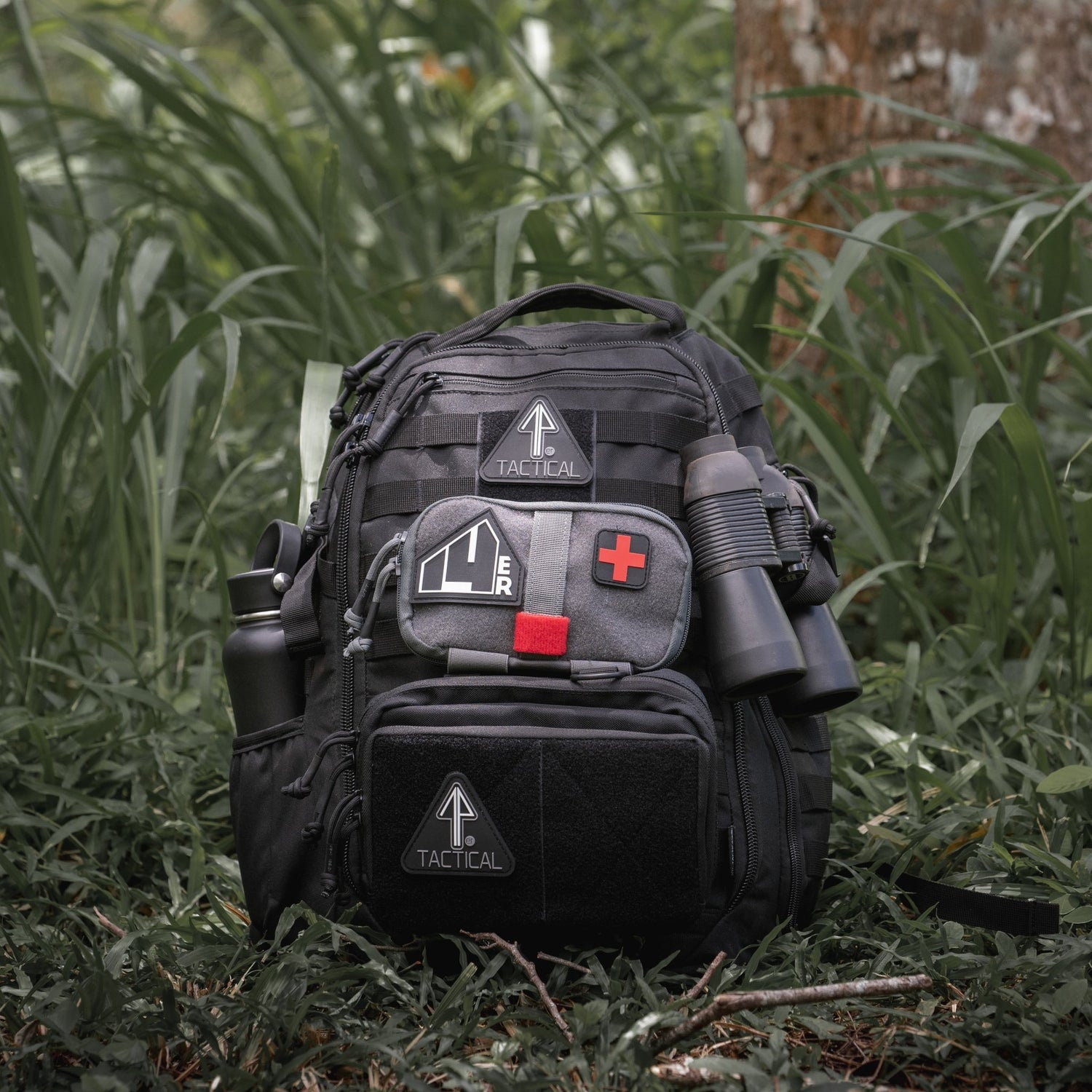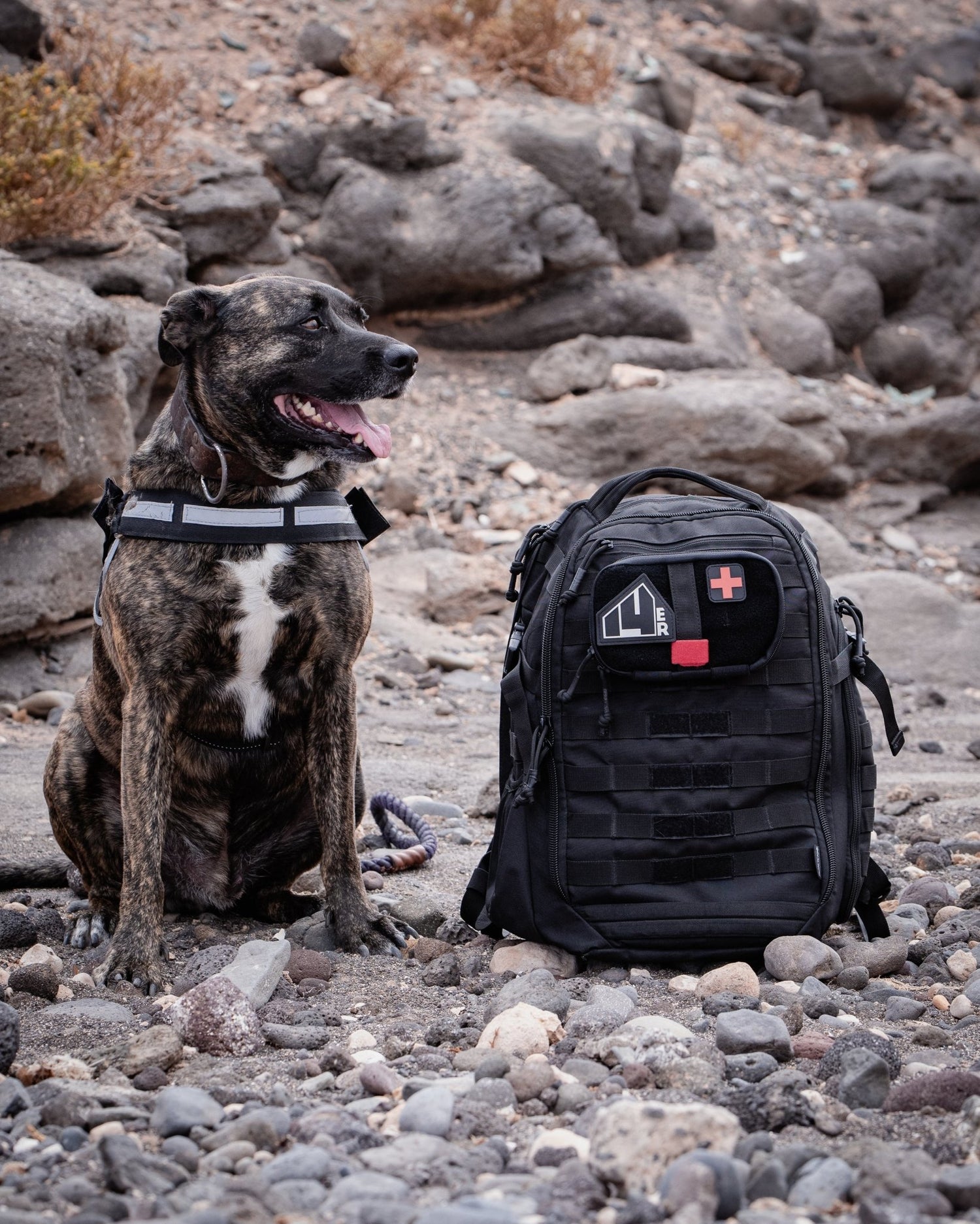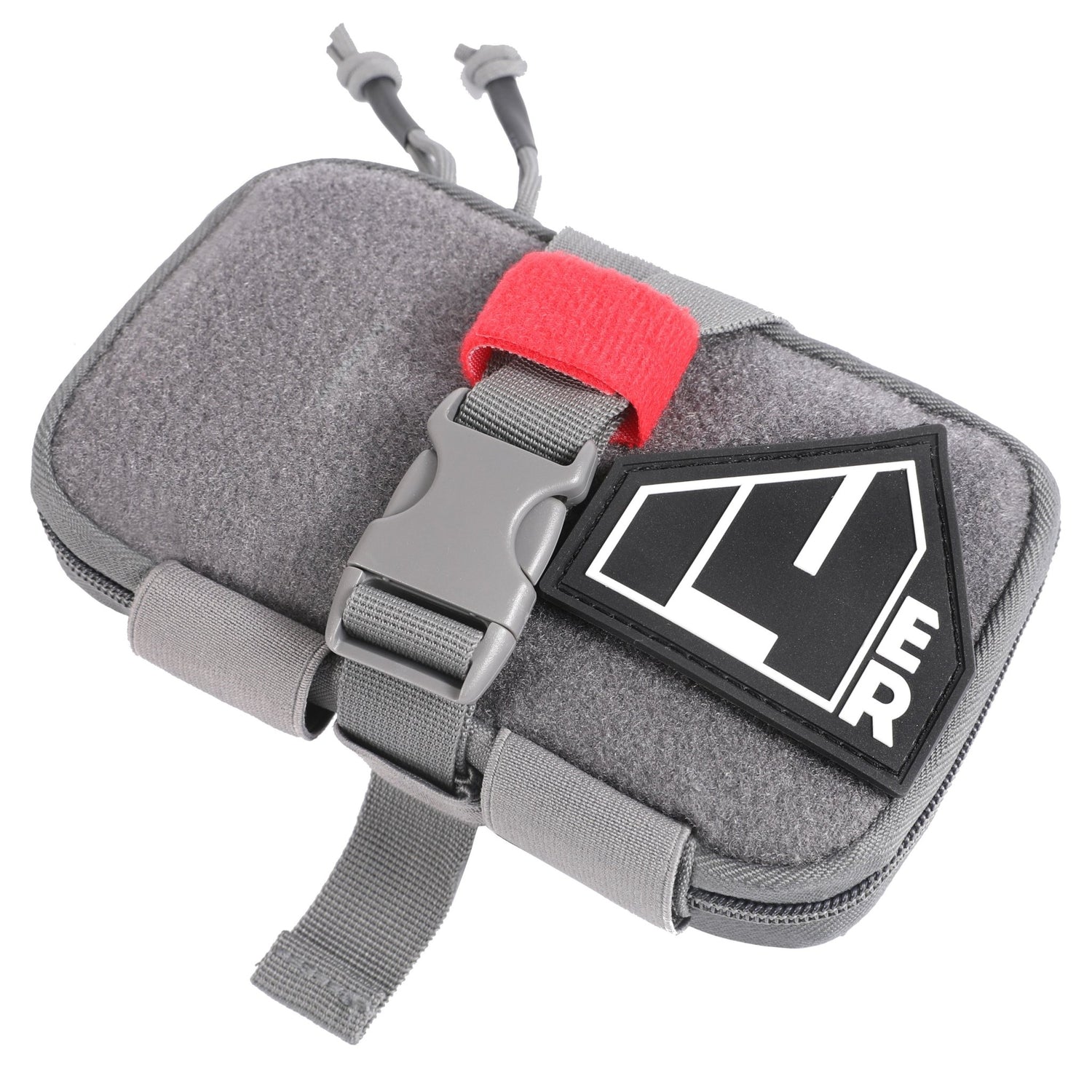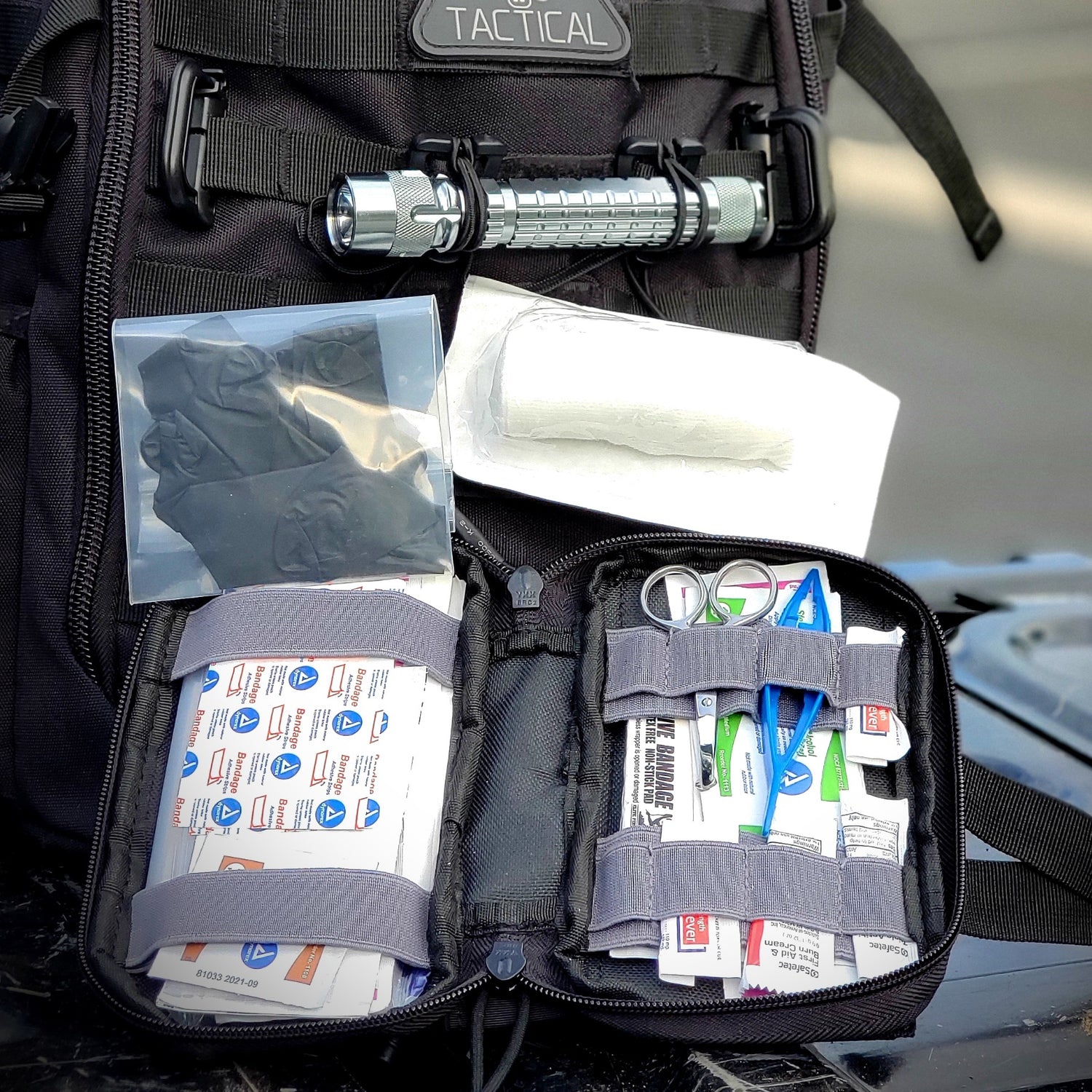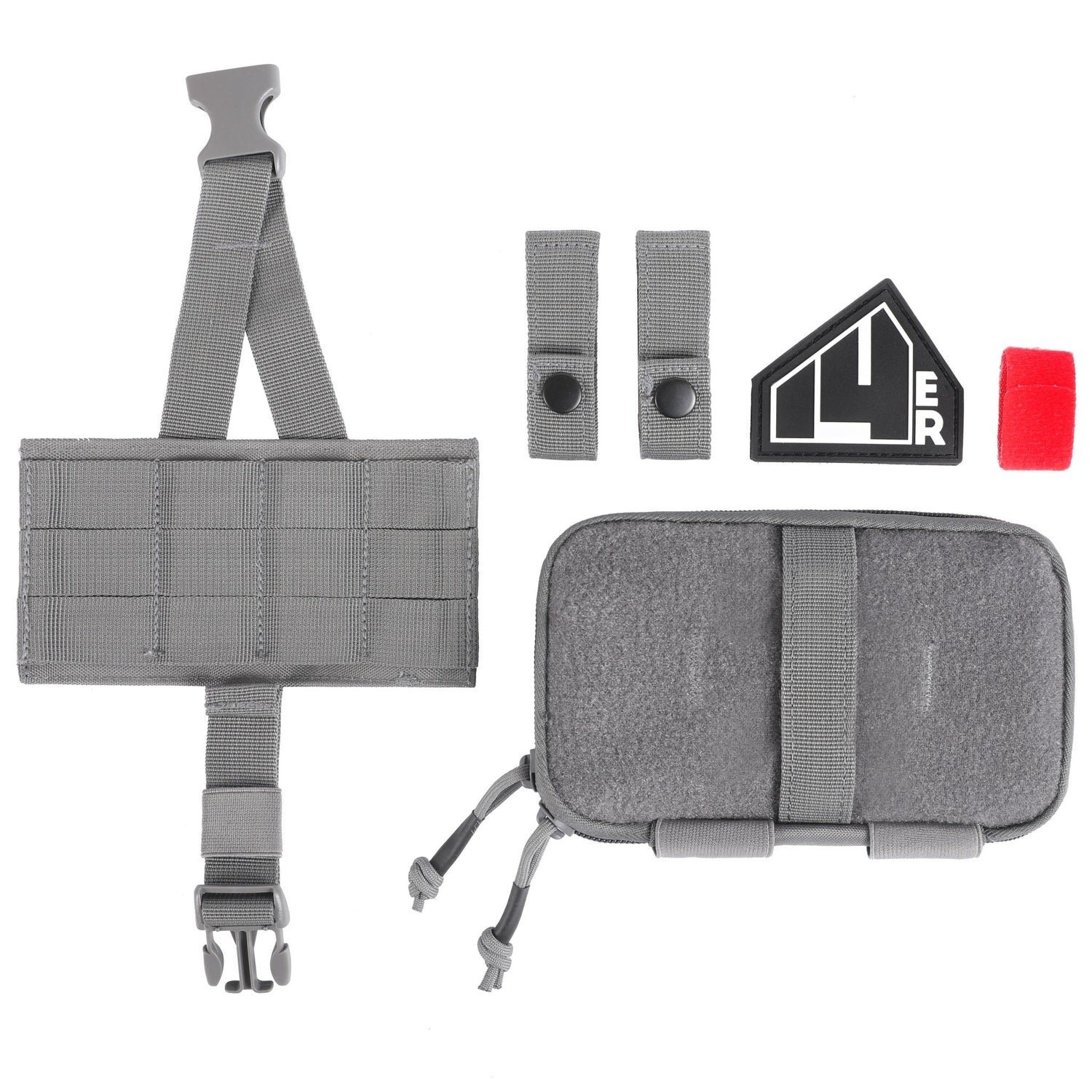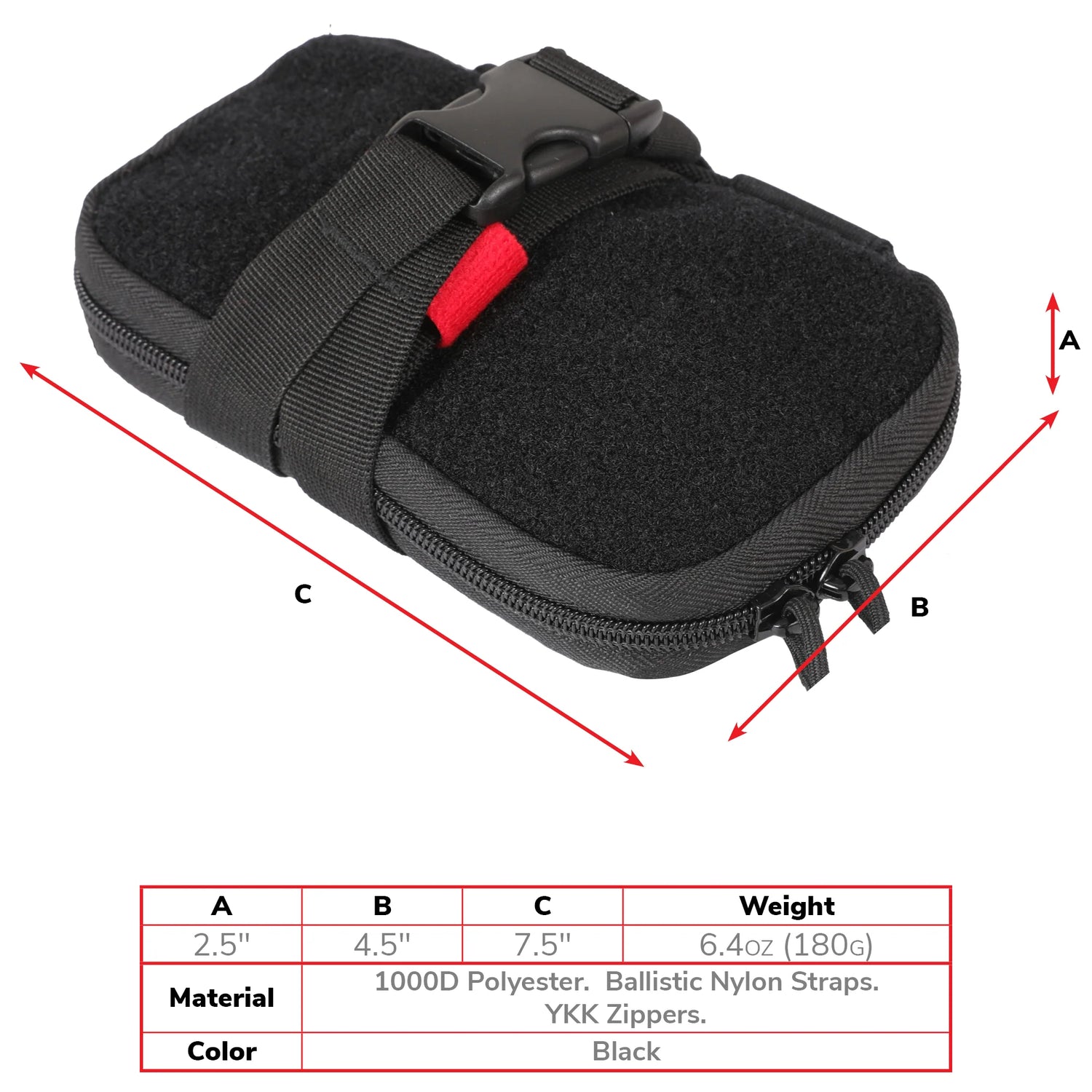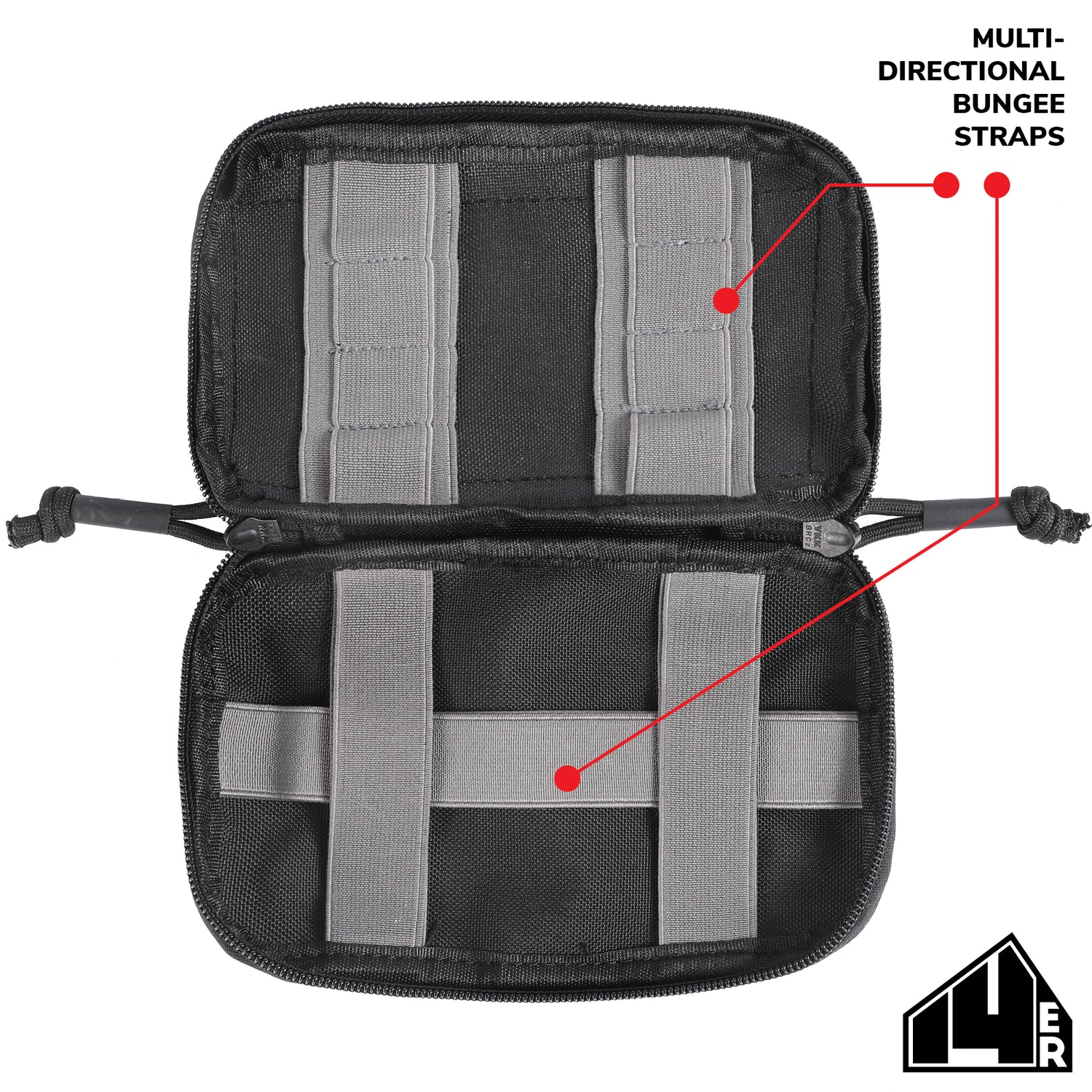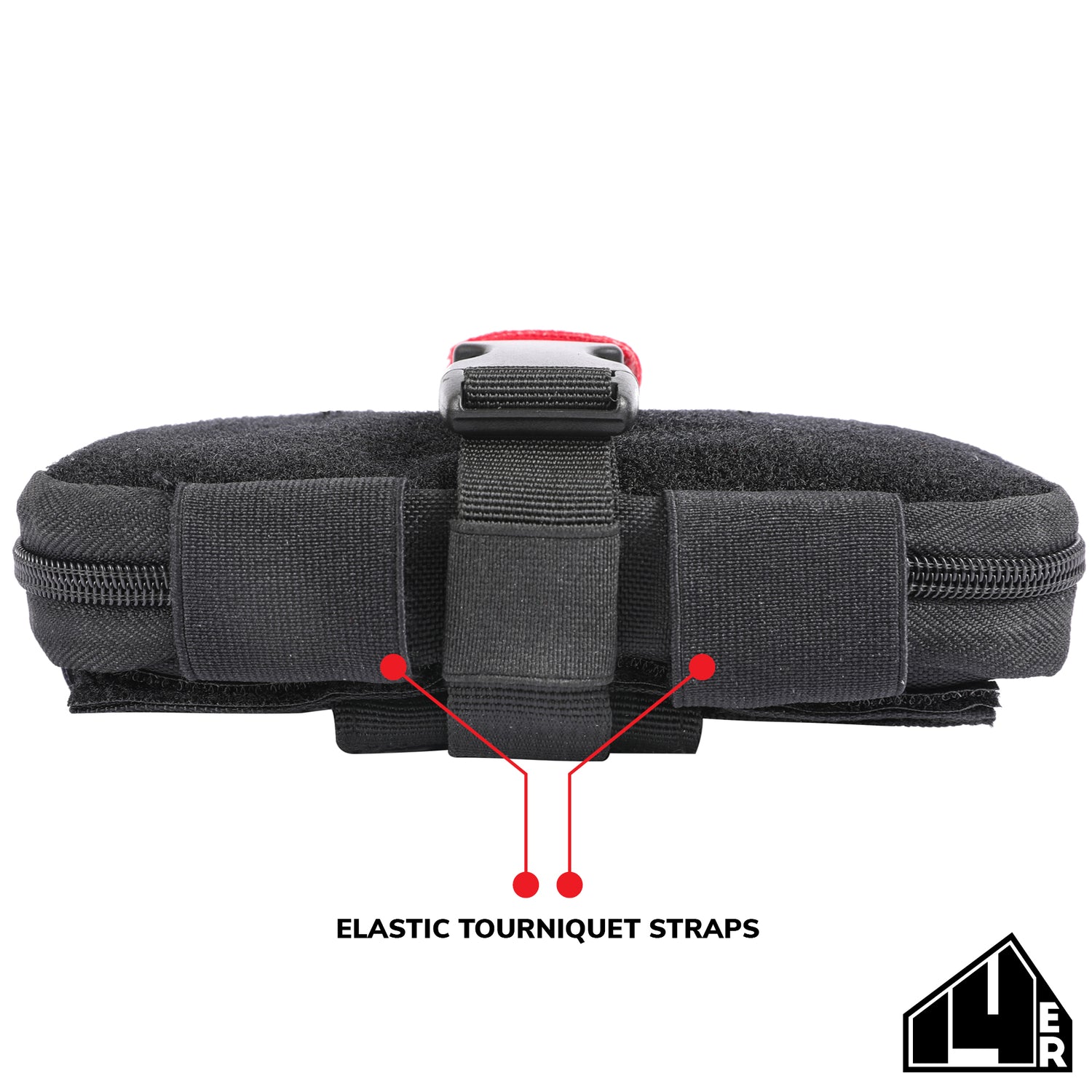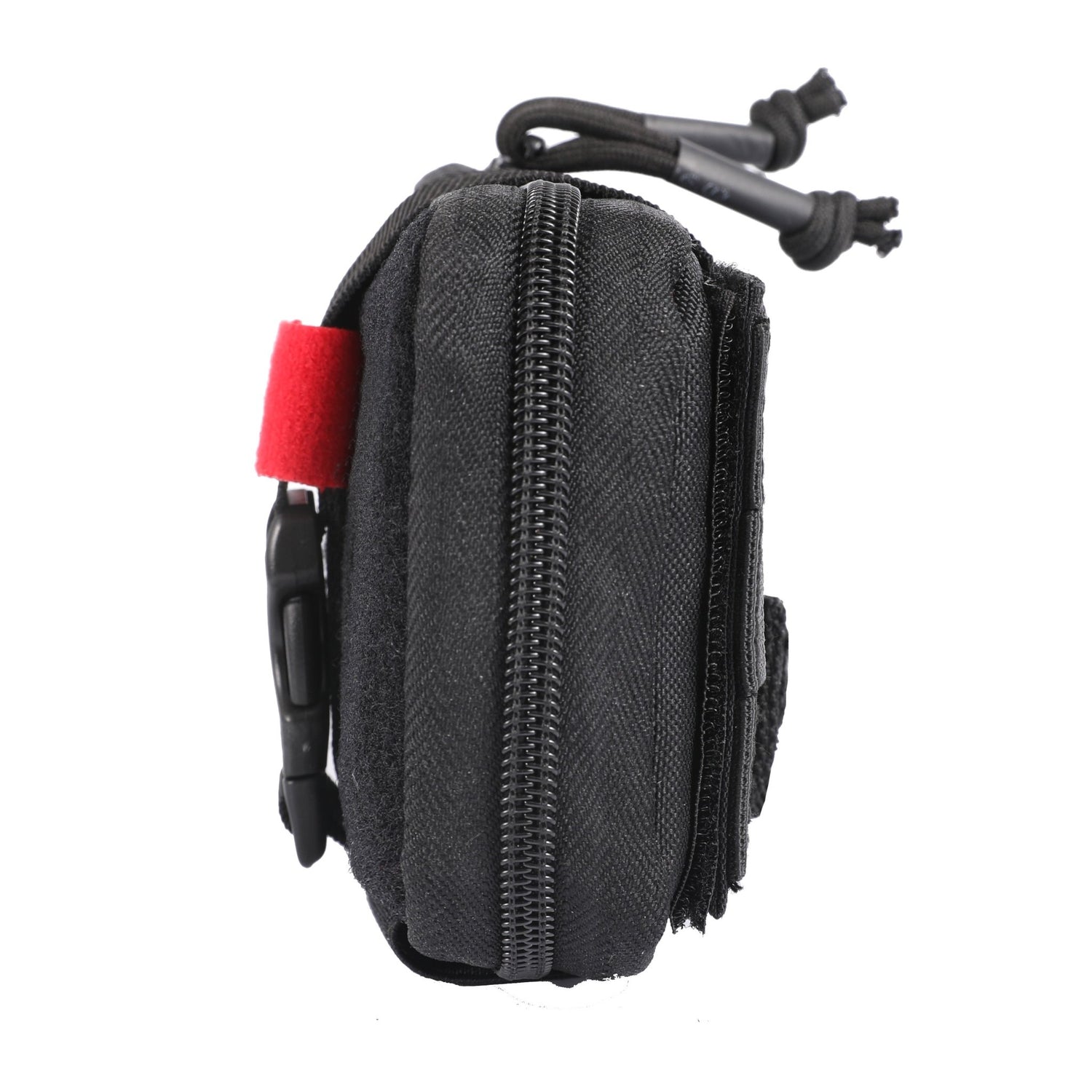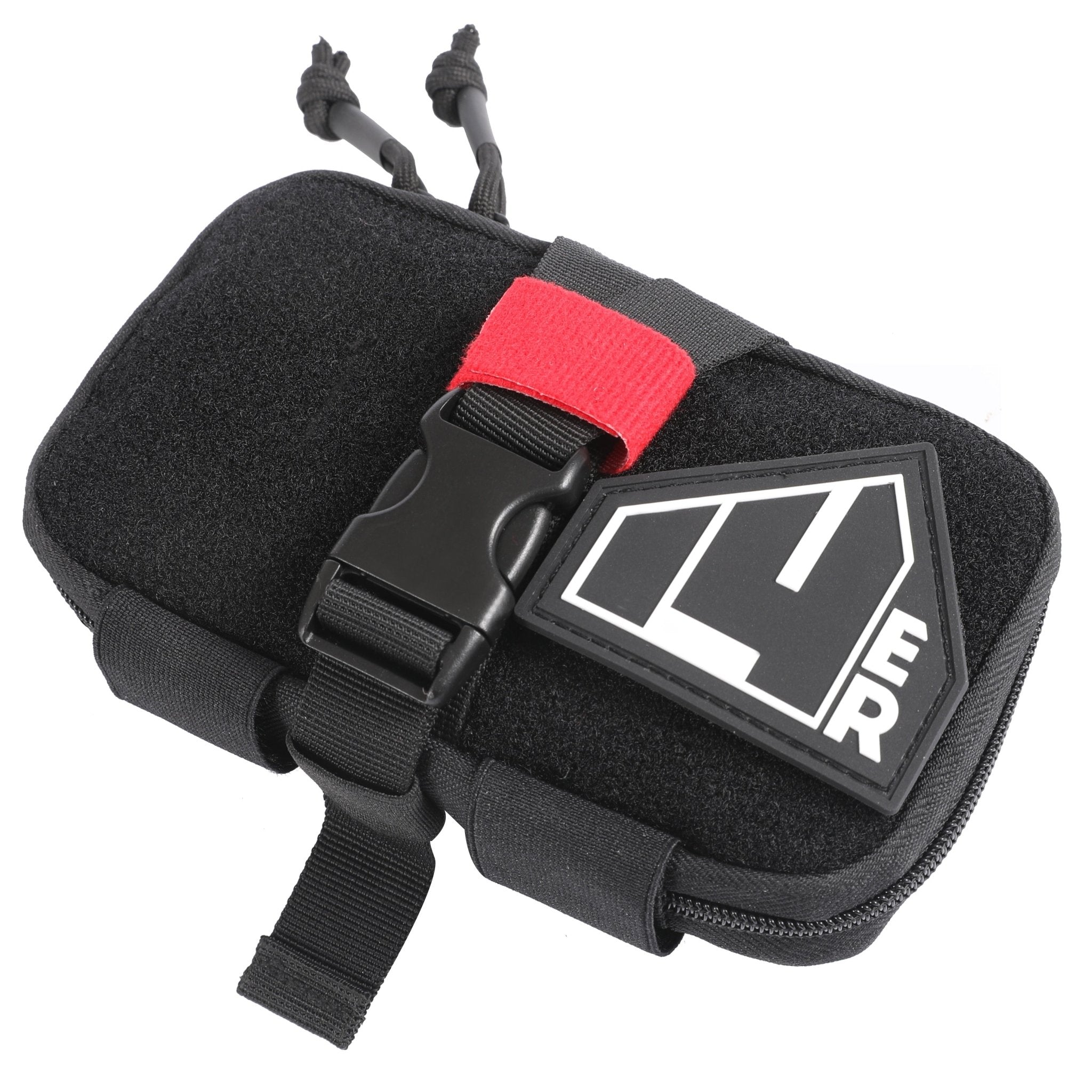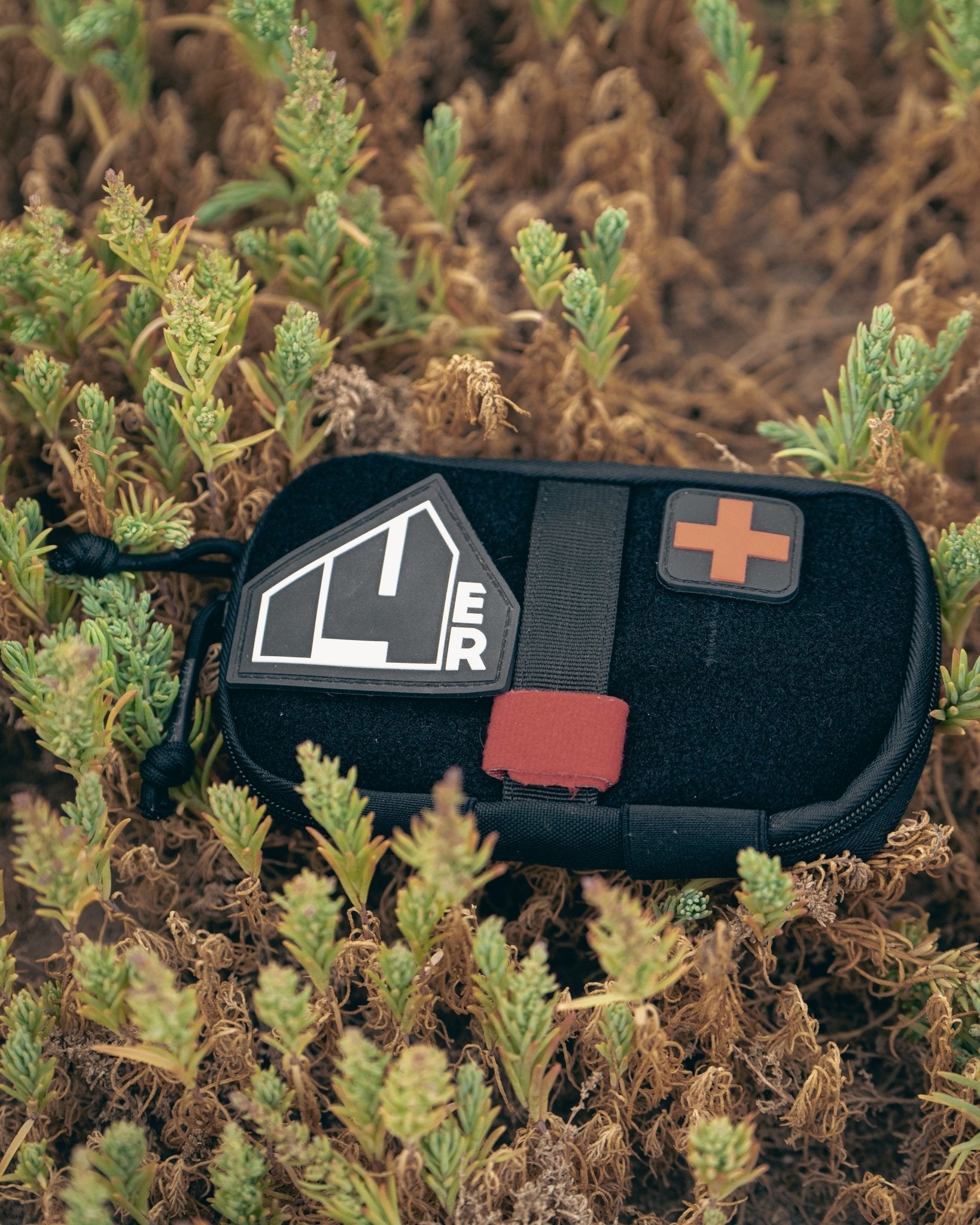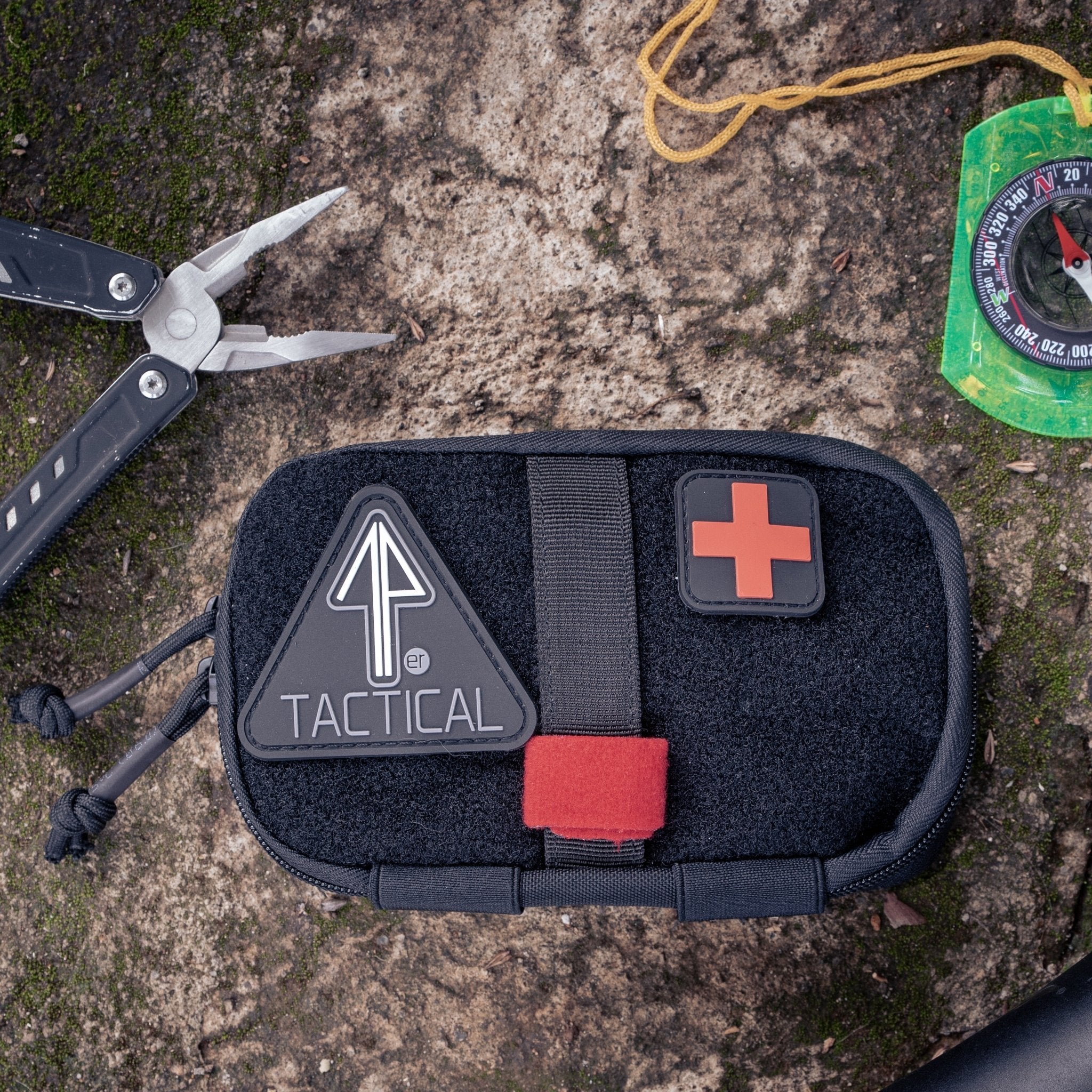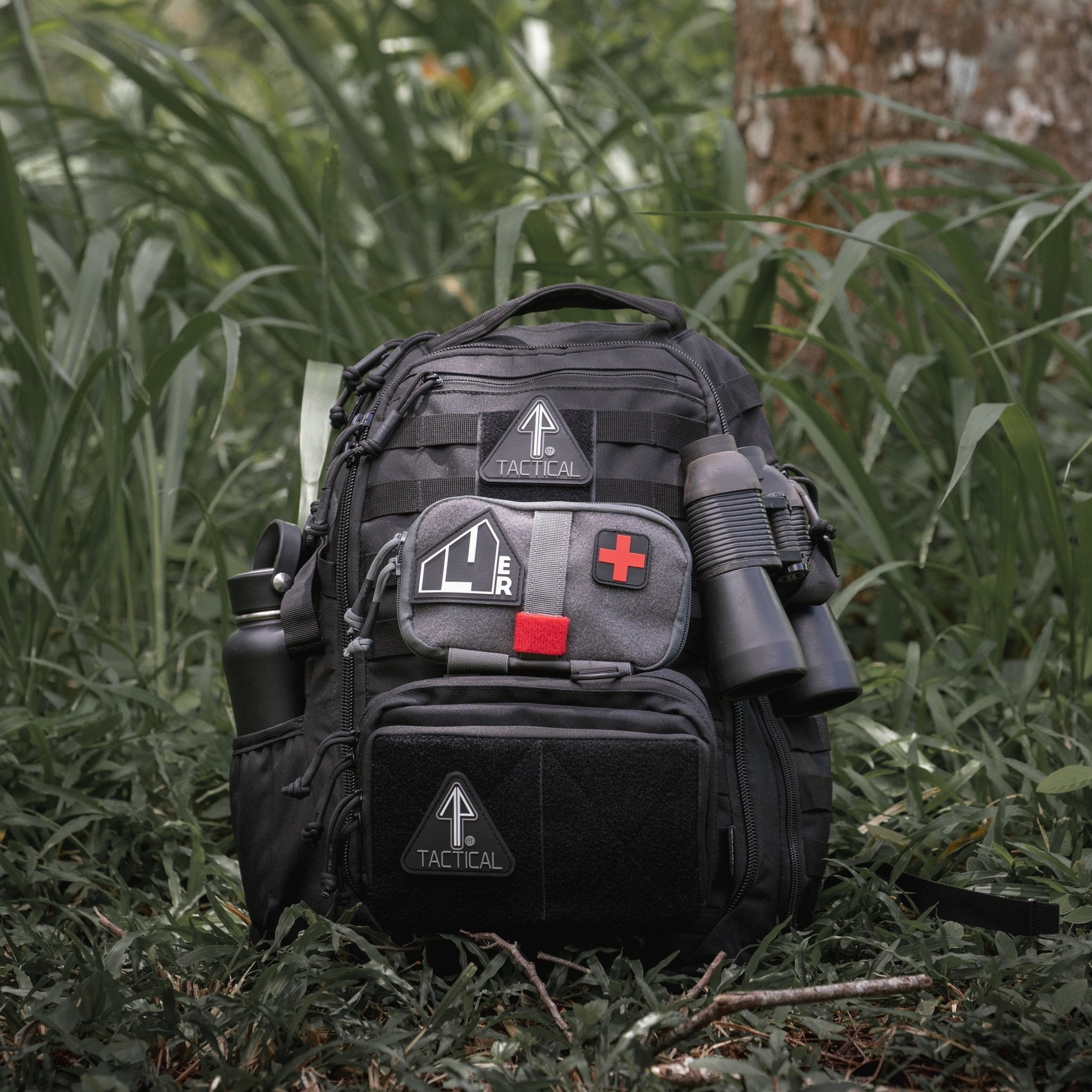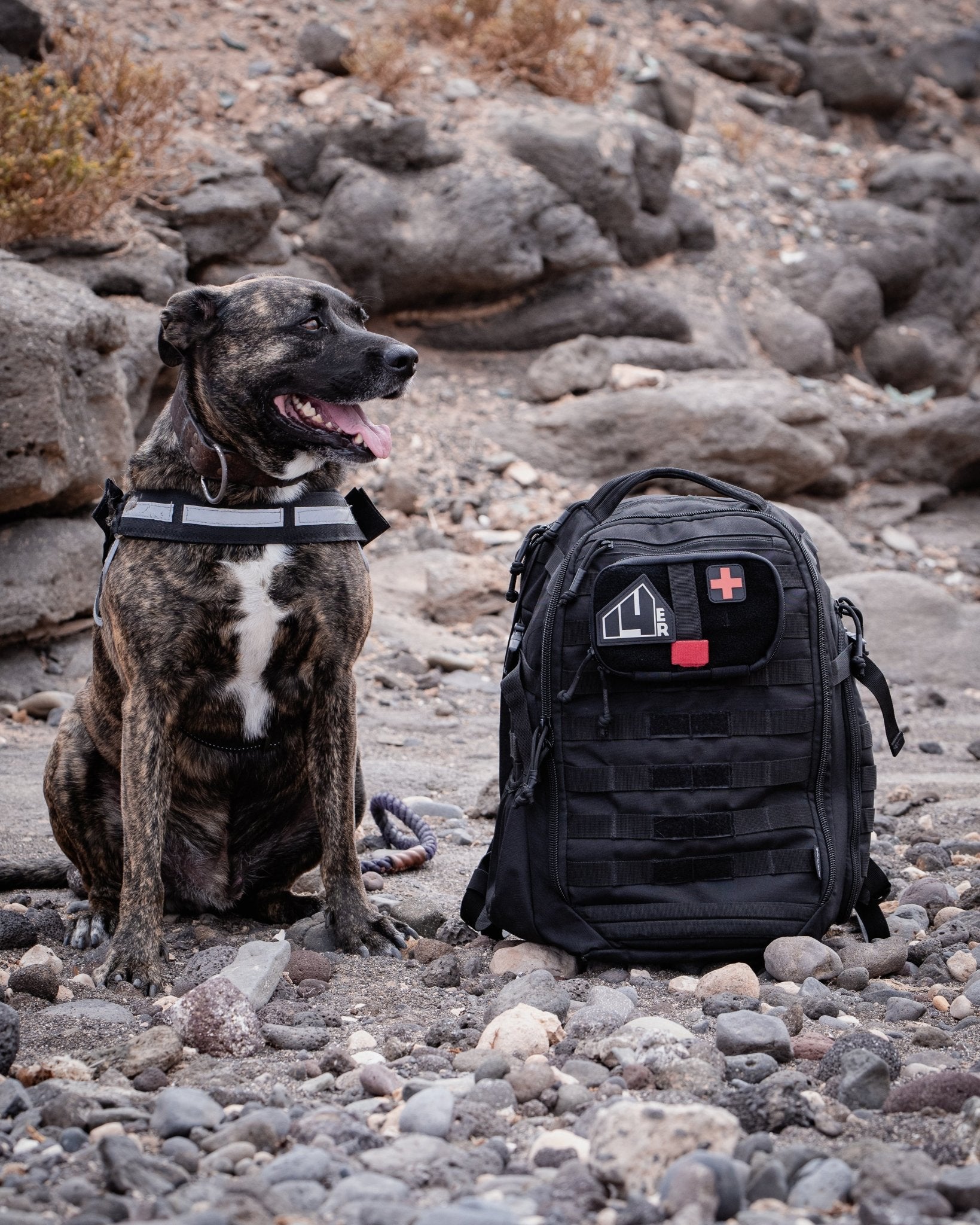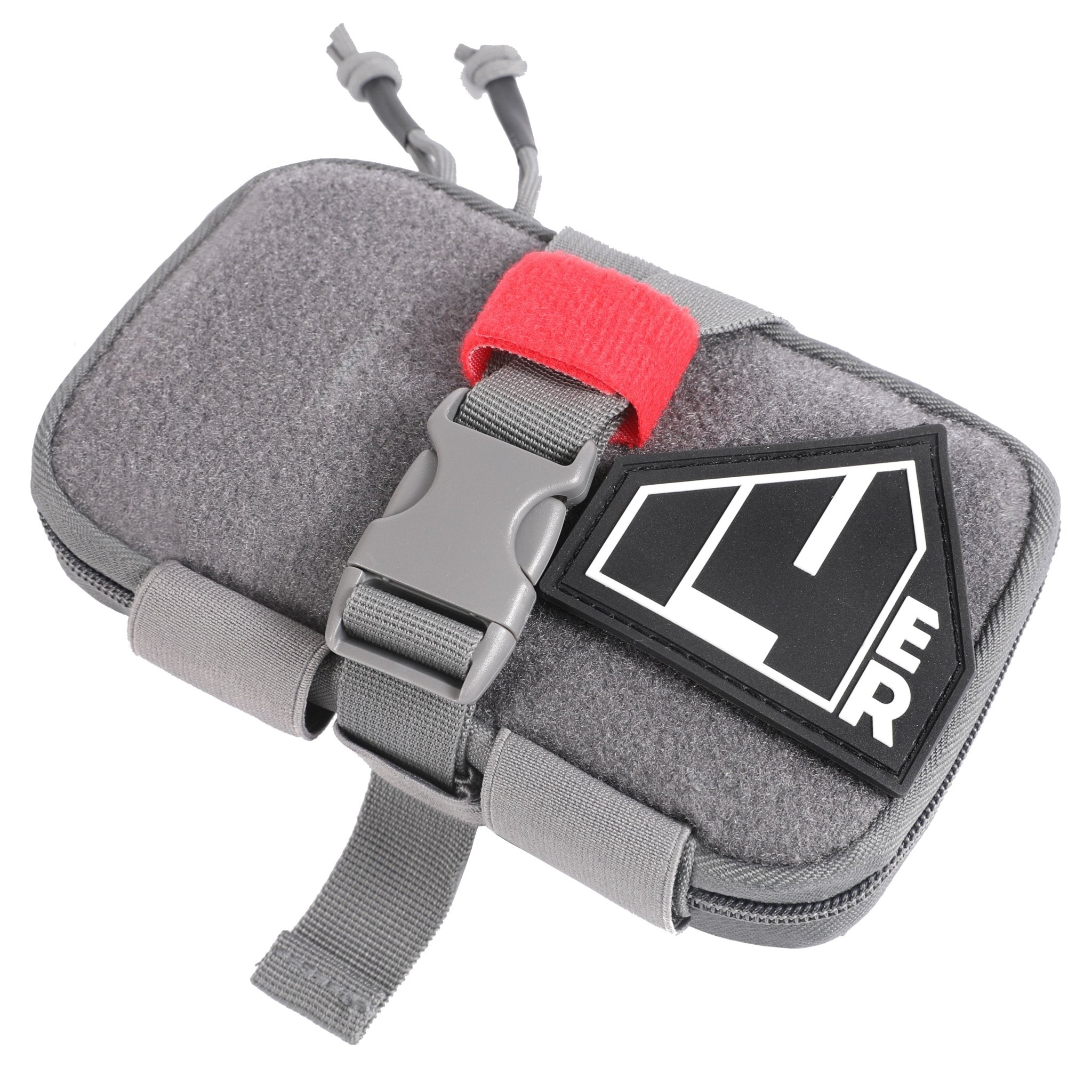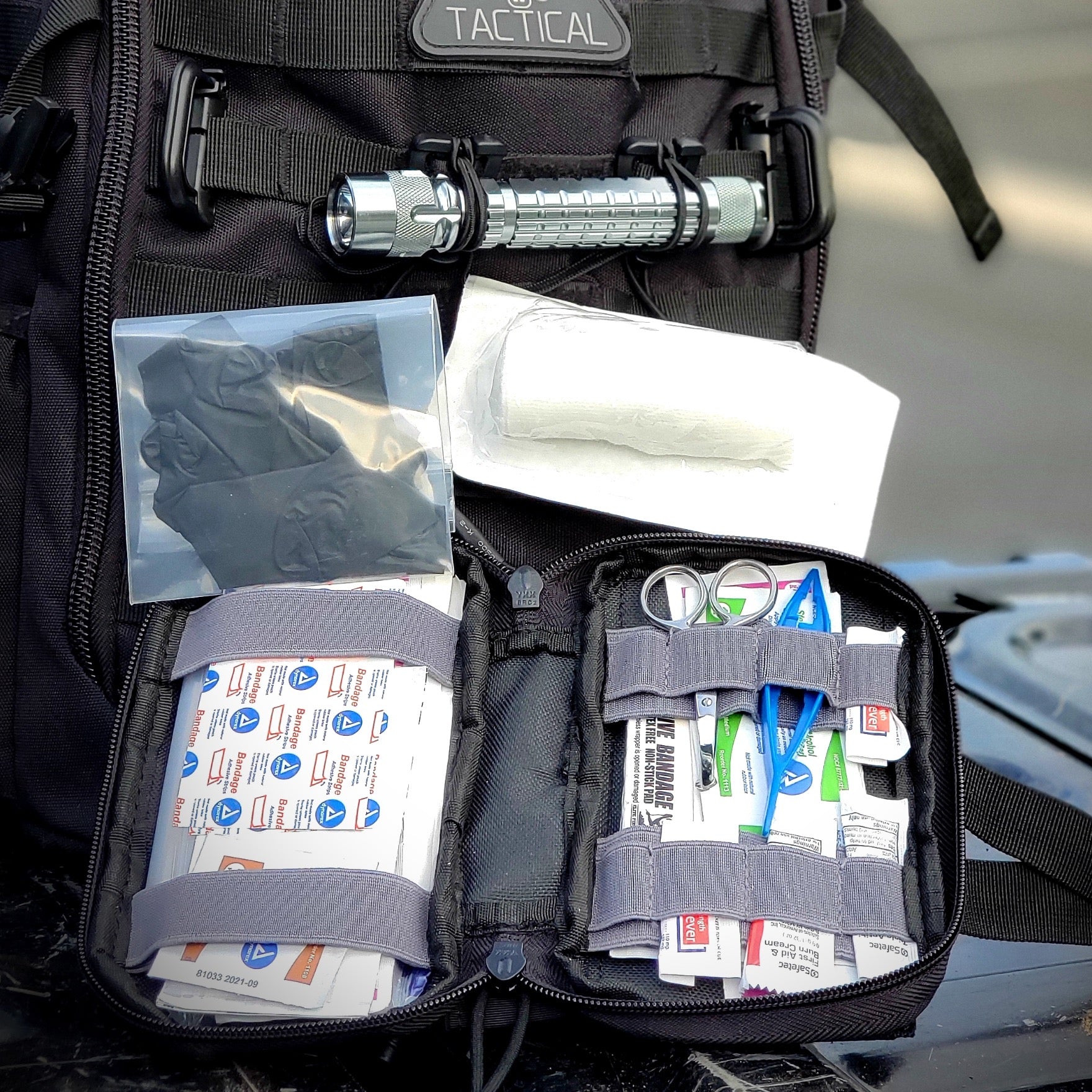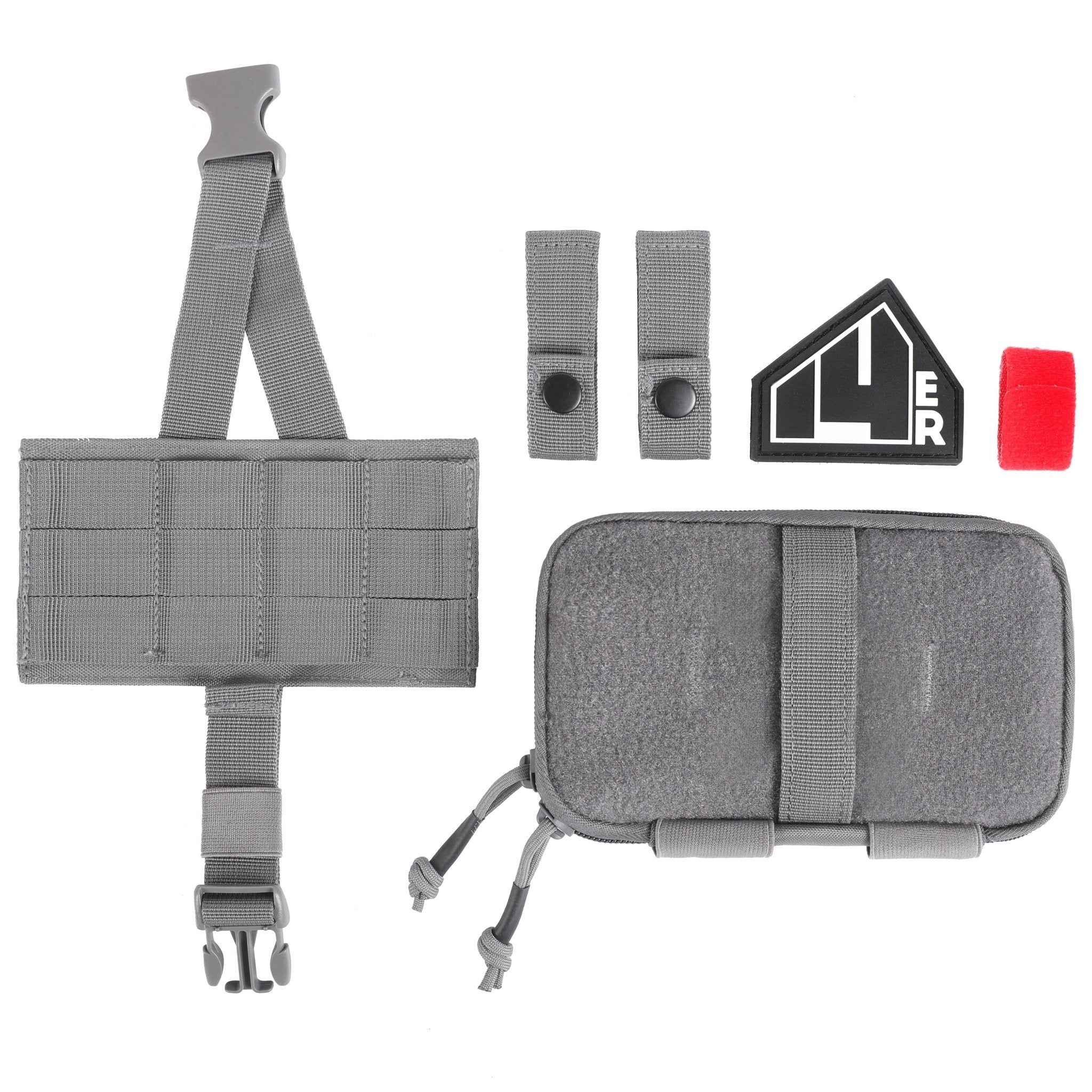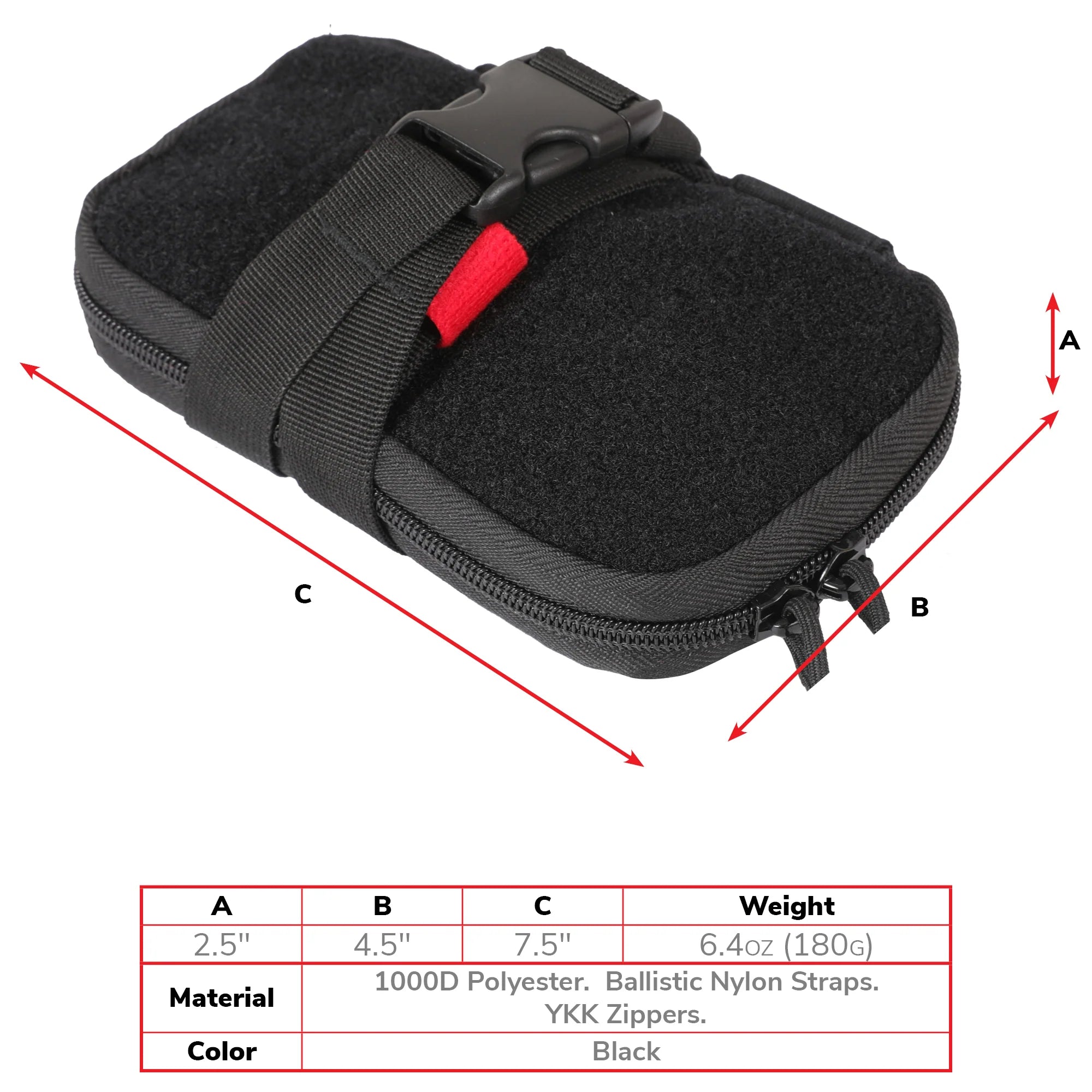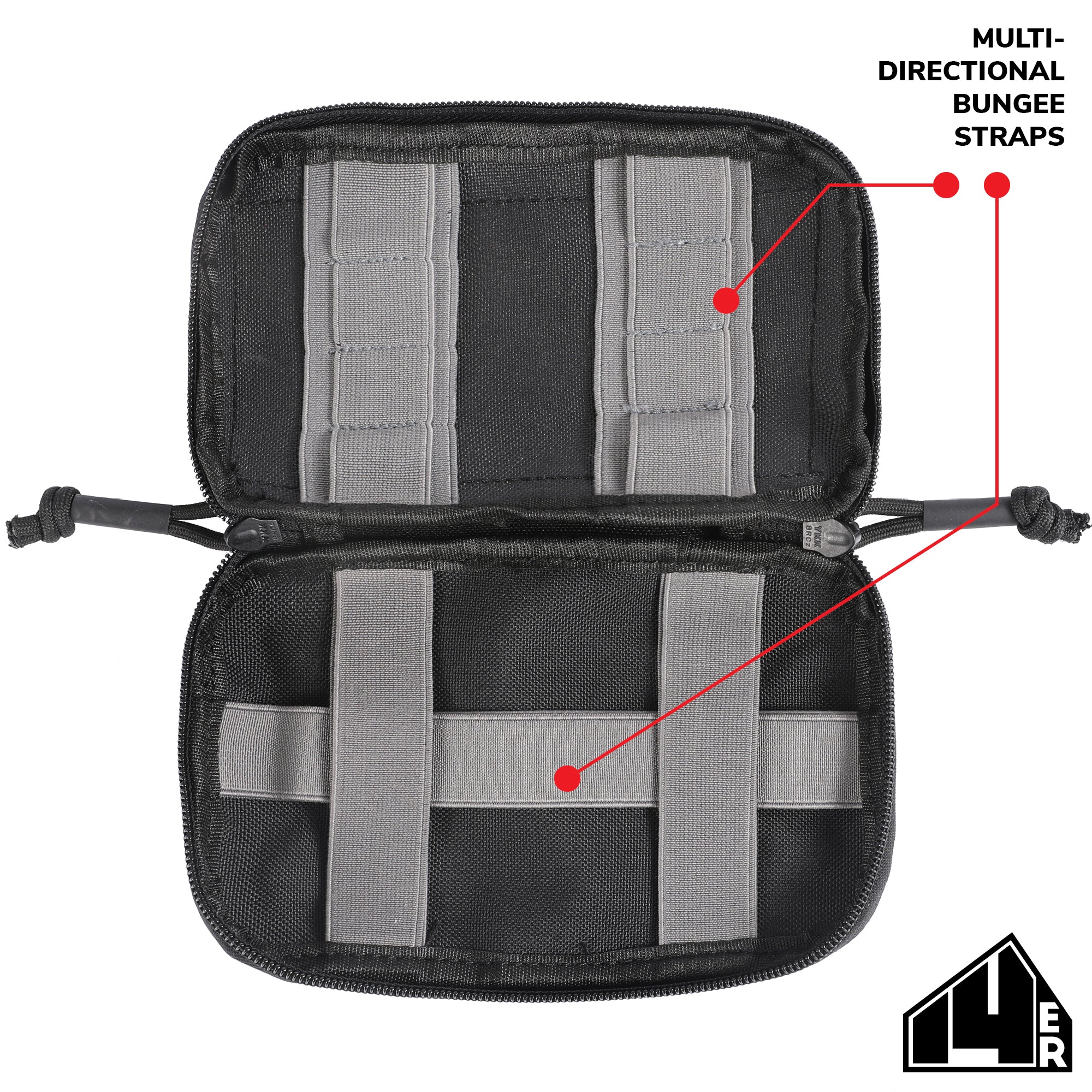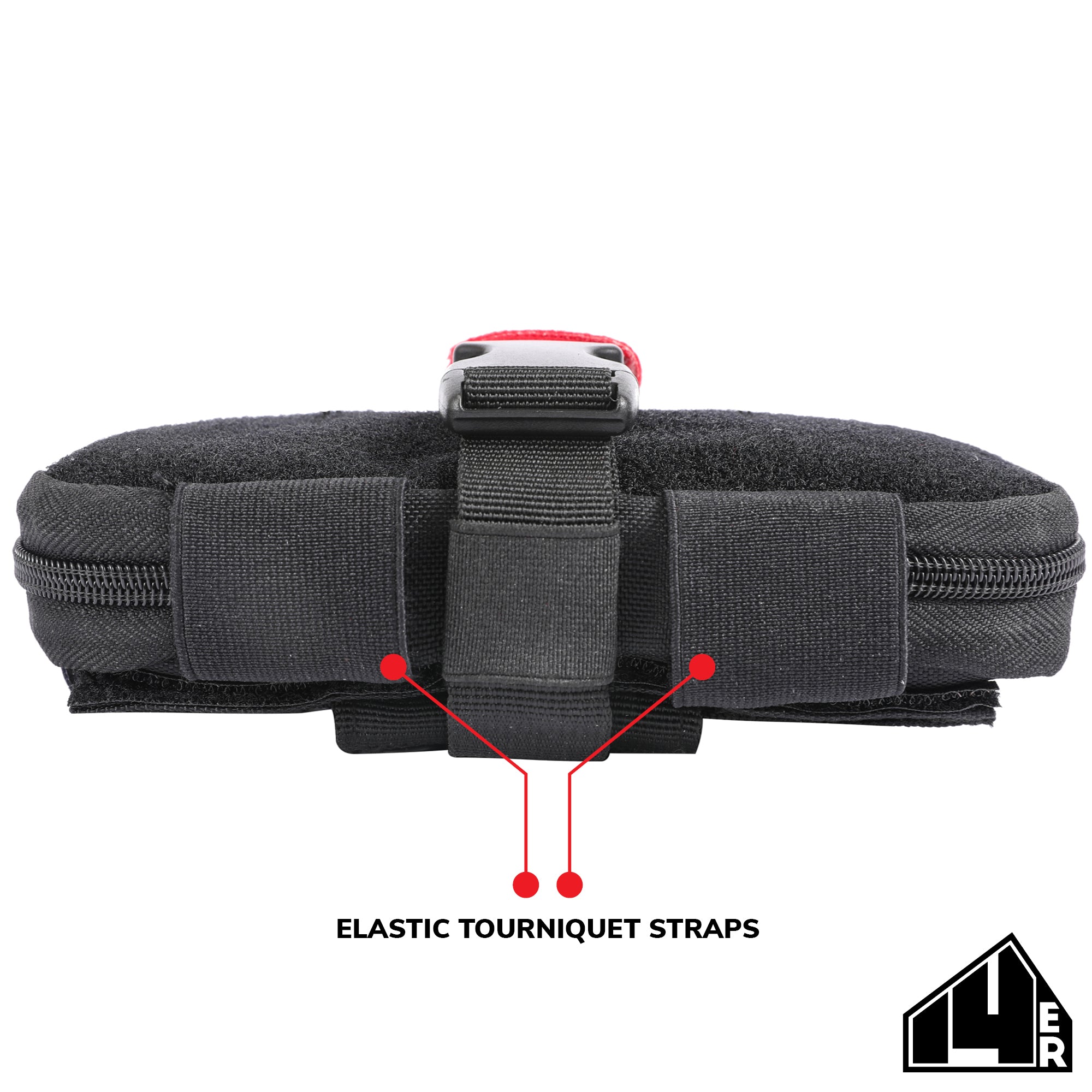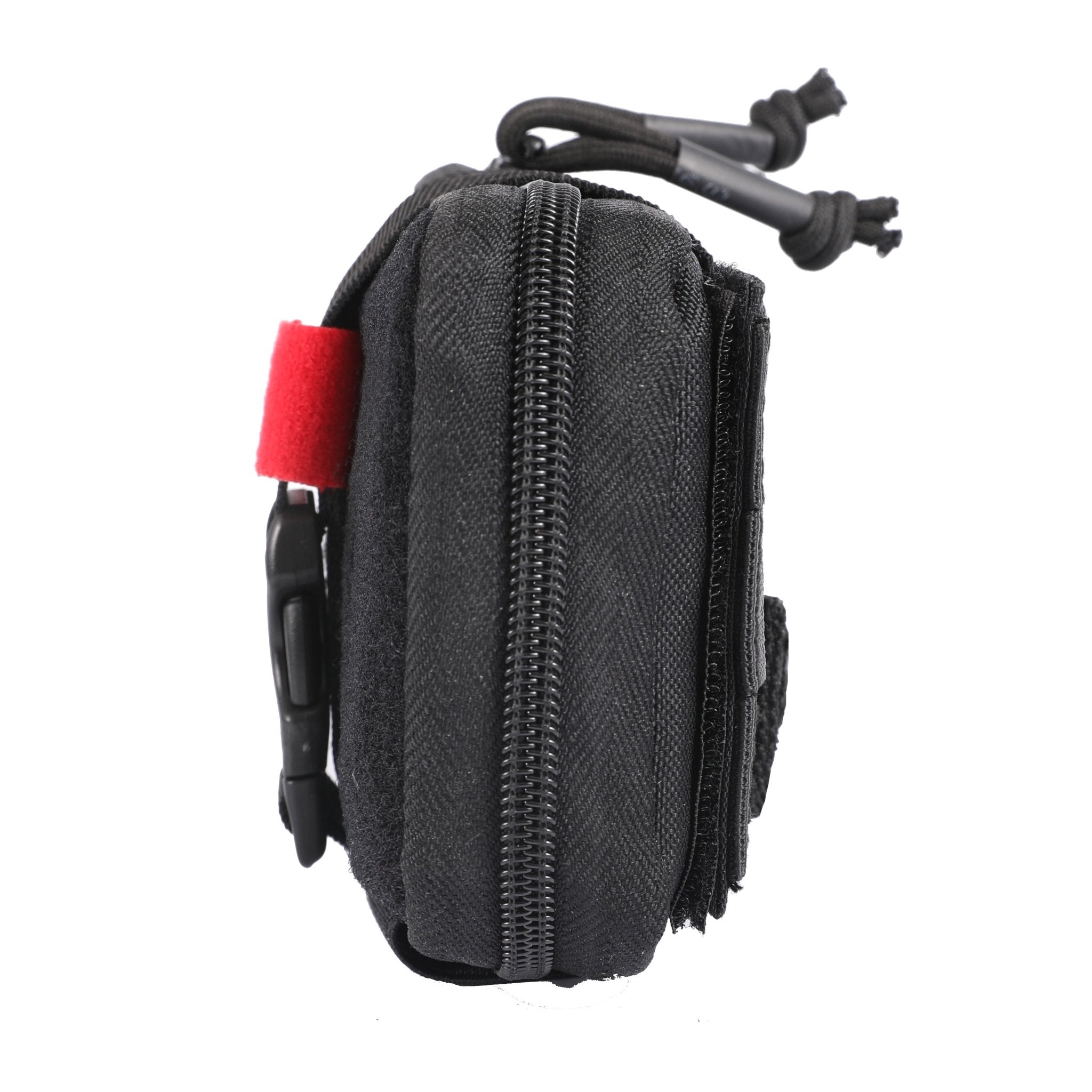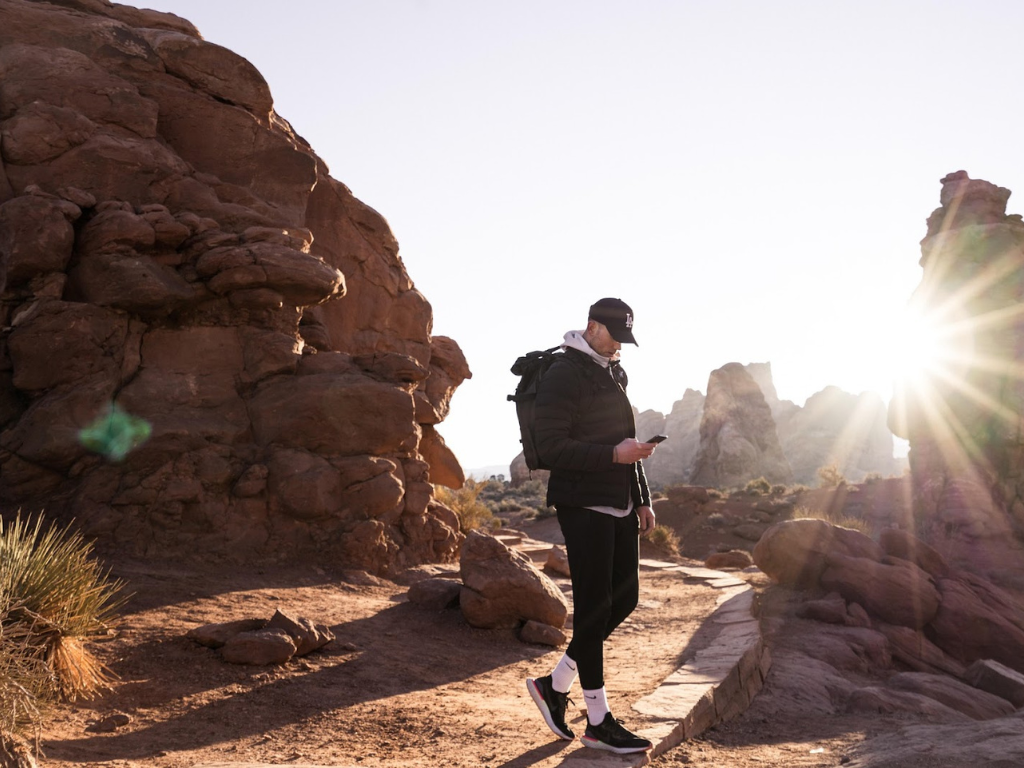
Planning your next outdoors adventure? You’re all set—you’ve got your tactical backpack, your camping essentials and a trusty pair of hiking shoes. What else to bring? A well-stocked first aid kit. Well, you’ve got one of those, right? Just toss it into the pack—
Hold on. You don’t think a first aid kit meant for everyday carry (EDC) would be fully equipped for a wilderness trek… do you? You’re heading into a different situation within a different environment. You’ve got to build your kit to match the scenario.
And you’ll definitely want an IFAK pouch to store your kit in. That’s gonna prove a major timesaver in the event of a medical emergency.
What Is an IFAK Pouch?
An individual first aid kit (IFAK) provides a useful selection of supplies for responding to an injury or health issue that occurs inadvertently. An IFAK pouch is a secure bag that can contain the entire contents of your individual first aid kit. It is strapped or clipped to your backpack or belt for ease of accessibility.
Time is of the essence in the emergency. You don’t want to end up scrambling for the remedies you need! You want to be able to grab that IFAK pouch and speedily retrieve exactly what you require. The kit’s gotta be well-organized and convenient to deploy.
The 14er Tactical IFAK Pouch is designed with this functionality in mind. Its construction features a mounting base with hook & loop adhesion. So the 14er Tactical IFAK Pouch can be easily attached to any bag equipped with the MOLLE system. The 14er Tactical Backpack comes with a MOLLE system for exactly this purpose.

Why an IFAK Pouch Is Essential for Outdoor Activities
There are three big reasons for you to use an IFAK pouch when hiking / camping: portability, fast deployment and protection of supplies.
Portability matters when you’re on a wilderness trek. Good mobility is paramount, and too much weight can prove highly burdensome. An IFAK pouch is designed to be compact and lightweight. It’s just big enough to hold the key supplies required to keep you stabilized until medical professionals can reach you. It enables ultralight backpacking, should you choose such an approach.
Fast deployment demands that you can quickly access your first aid kit and put it to use. That’s why an IFAK pouch is externally attached to your backpack or belt. You want to be able to quickly grab it, tear it off and retrieve what you need. We advise you to get a backpack with a MOLLE system, like the 14er Tactical Backpack. That helps ensure that the pouch will be affixed securely while still being easy to deploy.
Protecting your first aid supplies has to be a priority. Your IFAK pouch needs to keep all items clean, dry and secure all throughout your outdoor activities. If your first aid kit gets damaged or contaminated, it will not be of much use. That’s why the 14er Tactical IFAK Pouch is made from 1000D polyester. Heavy duty thickness enhances puncture and water resistance to keep your items safe.
How to Make an IFAK Pouch Checklist
The selection of supplies for your IFAK should be based on your planned activity. Do you plan to spend a day rucking for fitness? Or do you have a more ambitious goal, such as 14er hiking? (If that’s the case, you’ll want to check out our ultimate guide to 14er hiking for beginners.)
Once you know your planned activity, you can visualize the scenarios you could face during your wilderness adventure. With that in mind, you can select items to pack in your first aid kit. No first aid supply checklist can be comprehensive, so you need to get tactical in deciding what to bring.
Start by adding basic first aid items to your checklist. These are items you need to treat a wound, cut, sore or scrape: sterile disposable gloves, antiseptic solution, antibiotic ointment, hand sanitizer or alcogel, gauze pads, bandages
You’ll want to include a tourniquet. They are important for preventing blood loss. If you lose a lot of blood, you’ll lose consciousness—and then who knows how long it will take someone to find and help you.
How to Pack Your IFAK Pouch for Hiking
After getting supplies for your kit, you’ll want to sort and organize them properly inside your IFAK pouch. See to it that the contents are well-secured and correctly labeled. If you write each label by hand, make sure that the writing is easy to read and understand. If someone else has to use the IFAK to help you, they will need to understand these labels!
Keep the labels as clear and simple as possible. Don’t use complicated medical jargon. Write a brief instruction like “Stop the Bleed” on a label. Emphasize the main usage of each item.
Customize the first aid kit to reflect your particular needs. Do you have any allergies? Pack a remedy for that. Expect to be out in the sun for long periods? Be sure to bring sun protection and add sunburn and heat rash remedies to your IFAK.
For an outdoor trip, you might want to bring certain medications. The Hiking Life provides a sample list of medications to pack. The list includes a broad-spectrum antibiotic, a fast-acting diarrhea treatment, a rehydration solution sachet and a treatment for giardiasis. The list varies based on one’s personal needs. You should consult a physician before selecting which medications to carry.
After packing the IFAK pouch, test its overall size and weight. Do you find it convenient or cumbersome? Is it too heavy for a long hike? Will speedy deployment be an issue? Make adjustments to the contents or how they are organized until you are satisfied.

The Best IFAK Pouch Packing Tips for Outdoor Adventure
Whether you’re going on a 14er hiking trip or a simple ramble in the countryside, you’ll need to bring along a well-stocked IFAK pouch. We’ve given you the basics of packing it properly. Here are a few more tips to guide you:
- Maintain an inventory of the IFAK contents. Regularly check for depleted or expired supplies. Restock these items as soon as you can.
- Keep a waterproof marker (such as a Sharpie). Use it to mark down the time of application on a bandage or tourniquet. That will help you track when to replace it.
- Get some first aid training. This will come in handy for tactical preparedness in general, as well as wilderness preparedness.
- Don’t know where to get trained? Call your local Red Cross chapter for advice.
- Learn how to pack a tactical gear bag for an outdoor workout.
- Use a compatible backpack and IFAK pouch combo. They need to play well with each other. For example, the 14er Tactical Backpack is designed to partner perfectly with the 14er Tactical IFAK Pouch.


